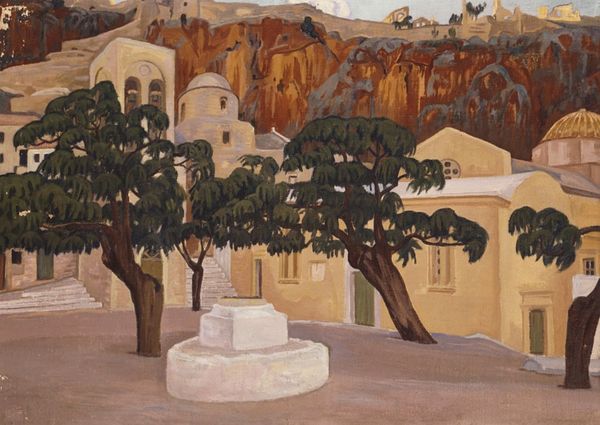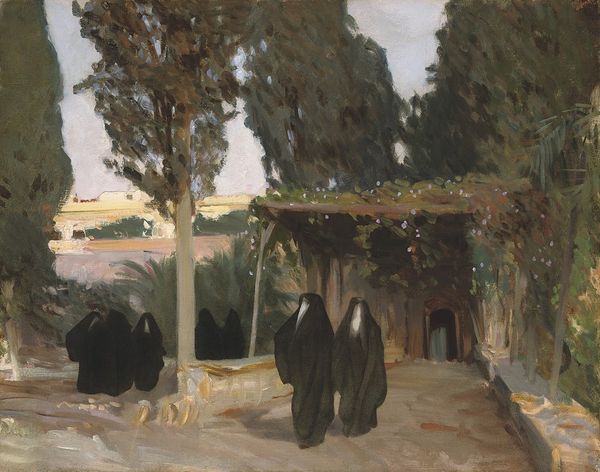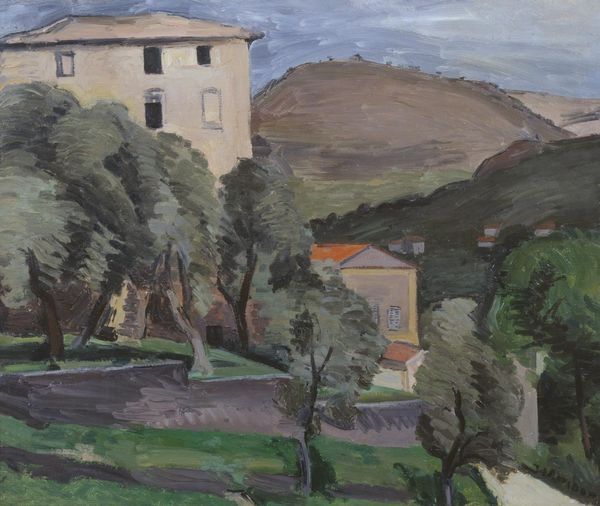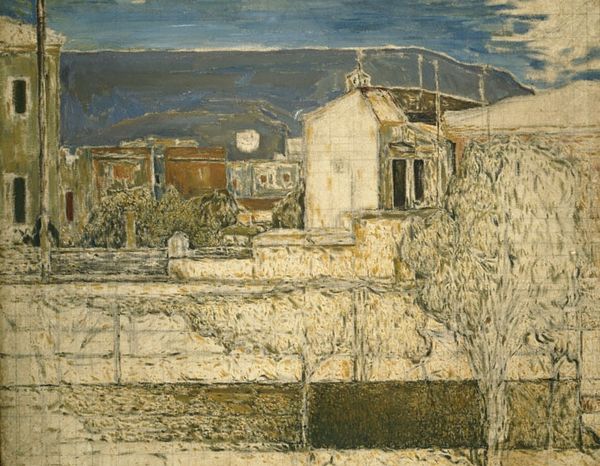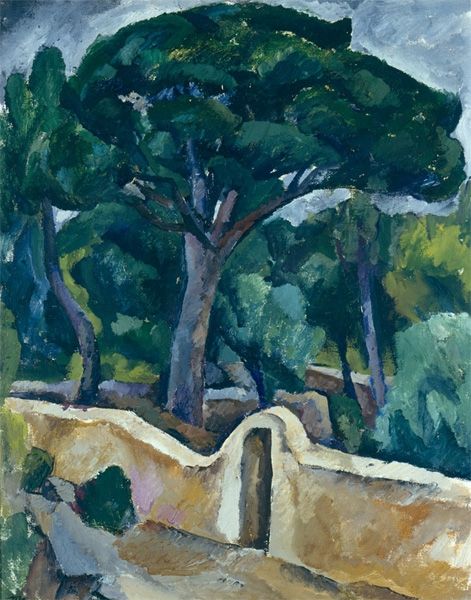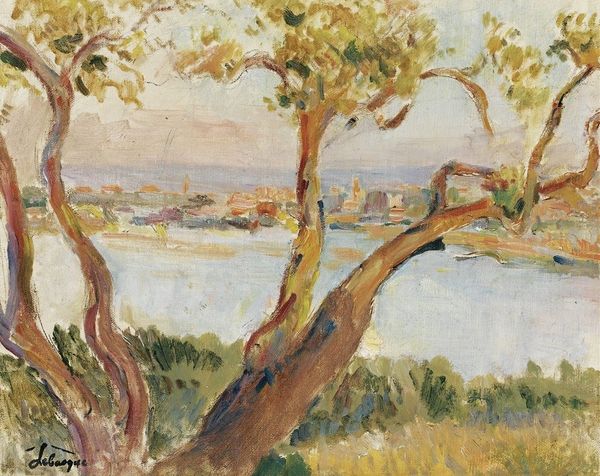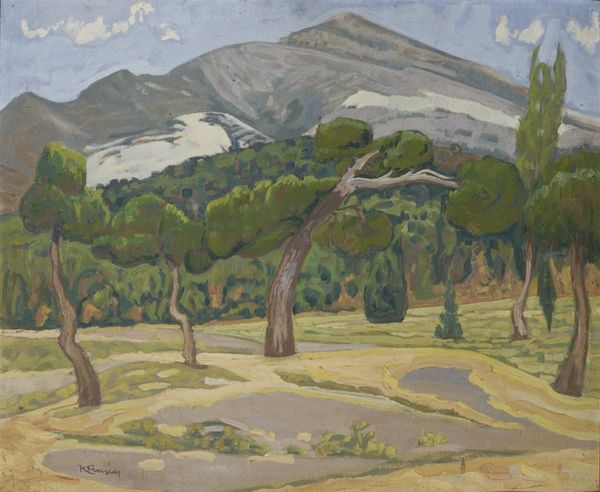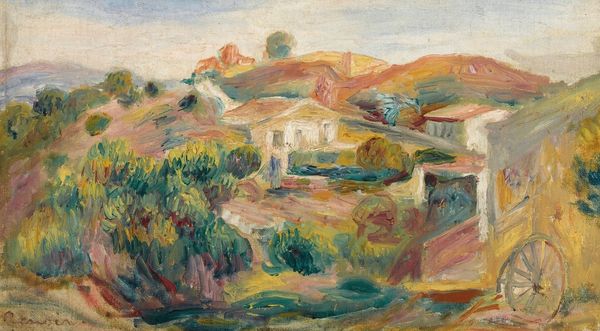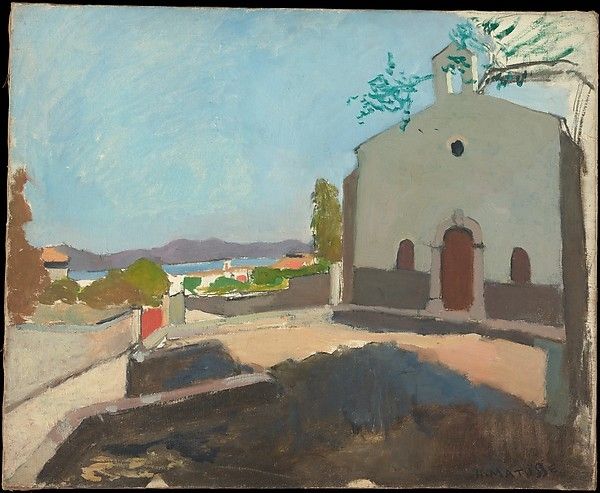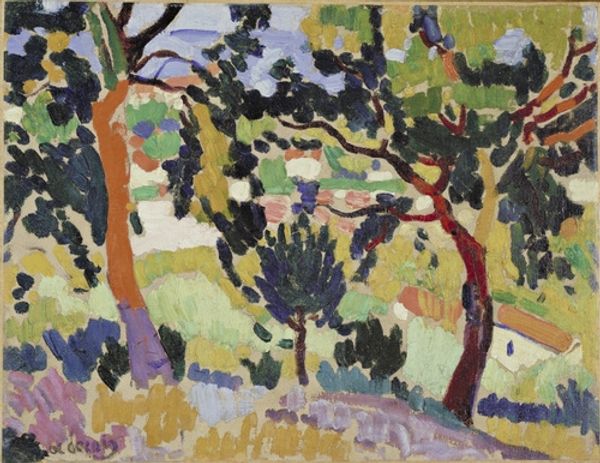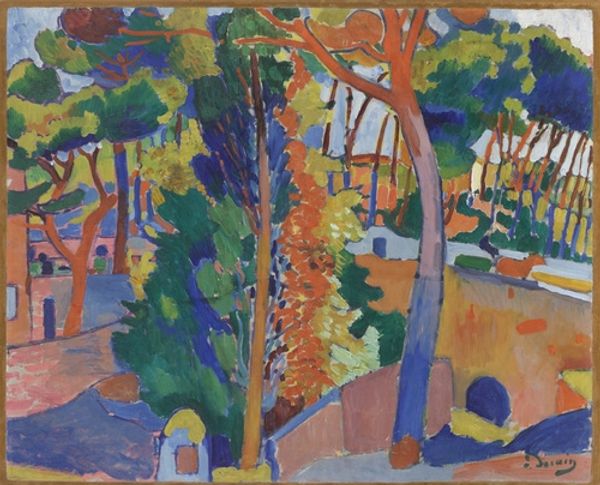
painting, oil-paint, impasto, architecture
#
painting
#
oil-paint
#
landscape
#
oil painting
#
impasto
#
modernism
#
architecture
Copyright: Public domain
Curator: This is Konstantinos Maleas’s, "The Church of the Pantanassa, Naxos", rendered in oil on canvas in 1928. Editor: Striking! There's a certain starkness, almost like a stage set. The whitewashed building against the cool sky—it feels incredibly modern for something painted almost a century ago. Curator: Indeed, its simplified forms reveal a strong Modernist sensibility. The interplay of geometric volumes, particularly the dome and cubic structures, presents a visual dialogue between pure form and representational space. Note the strategic impasto in areas catching light, a key feature to explore its texture and tonality. Editor: You’re right, those deliberate textures are interesting, and contribute to its formal strength. Beyond that though, I see how the bright, reflective surfaces underscore a socio-political reading: Naxos, like many Greek islands, embodies a unique cultural resilience, adapting and surviving through countless occupations and shifts in power. The bright, almost defiant whiteness of these buildings, is really an expression of persistence against all odds. Curator: An intriguing perspective. But structurally, observe how Maleas uses the tree, centrally positioned, to mediate the severe lines of the architecture. It introduces a dynamic asymmetry, disrupting an otherwise rigid composition. Editor: Fair enough. And yet, in that contrast—the rigid versus the organic, you know, one could also read it as a symbol for how tradition can live alongside, or even in conflict with, the natural world. Churches and olive trees—these endure. Also, did Maleas maybe choose this spot on Naxos very deliberately as a sort of symbol? Was there any political statement about religion intended at the time it was made? Curator: Unfortunately, accessing definitive political or ideological claims within his artistic choices is challenging; nonetheless, the way he organizes the plastic elements makes for a complex, if formally compelling work. Editor: So, even without explicit messaging, Maleas captured something enduring about place, memory and possibly faith. These whitewashed structures stand, resilient like those who built and still inhabit them. Curator: I concur. It is the power of arrangement, after all, that elevates this vista beyond a mere representation. The experience itself, distilled through a carefully orchestrated formal schema.
Comments
No comments
Be the first to comment and join the conversation on the ultimate creative platform.
